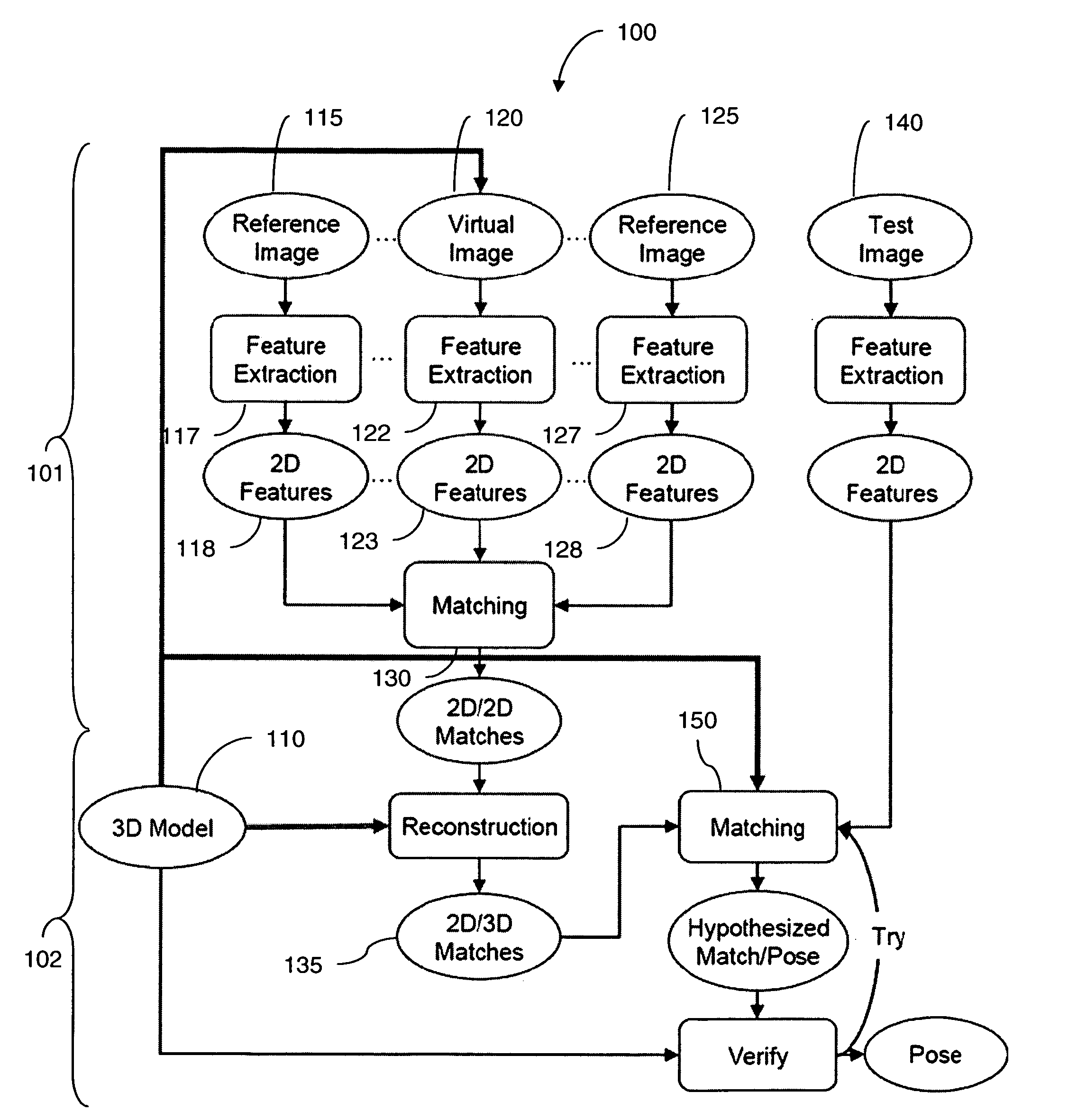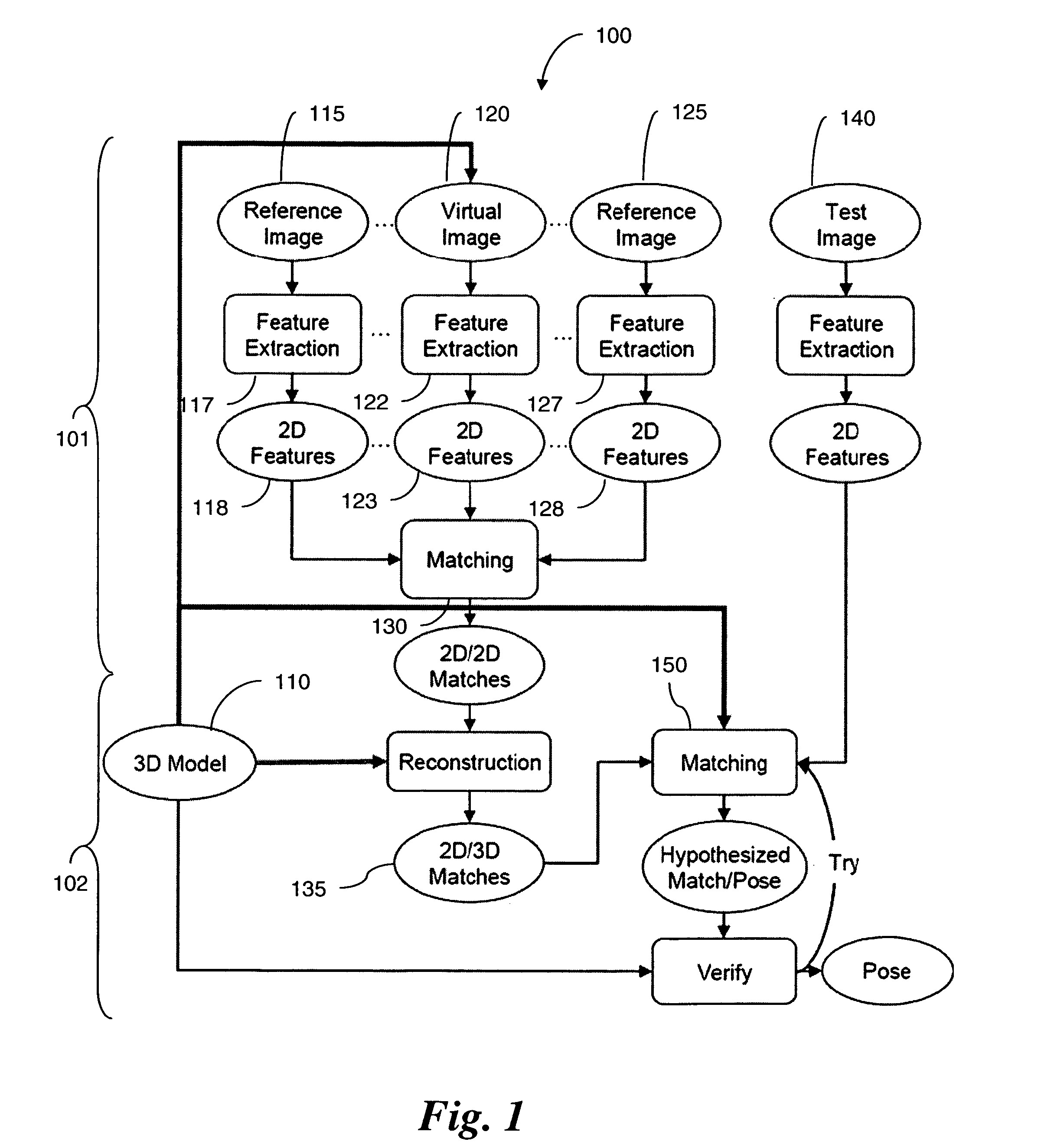Fast object detection for augmented reality systems
a technology of augmented reality and object detection, applied in image analysis, instruments, computing, etc., can solve the problems of not being able to detect objects fast and robustly, not being able to solve real-time applications, and not being able to solve real-time problems such as the need for fast and robust detection, so as to reduce the dimensionality of gradient image vectors and minimize the impact of illumination
- Summary
- Abstract
- Description
- Claims
- Application Information
AI Technical Summary
Benefits of technology
Problems solved by technology
Method used
Image
Examples
Embodiment Construction
[0039] The inventors have discovered an improved method of object detection. In the method, a statistical analysis is performed of the appearance of key points from all possible viewpoints in the scene. The method then makes use of the known 3D geometry in both the matching and pose estimation processes.
[0040]FIG. 1 depicts an overview 100 of the system and method of the invention for object detection according to the invention, as well as elements from conventional methods for comparison. Most of the conventional methods make use of techniques for wide-baseline stereo matching, which is solely based on 2D images without considering any run-time requirements. In many applications both a 3D model 110 and several training images 115, 125 may be available or can be created easily during an off-line process.
[0041] The approach of the present invention includes two phases. In a training phase 101, a compact appearance and geometric representation of the target object is built. This is ...
PUM
 Login to View More
Login to View More Abstract
Description
Claims
Application Information
 Login to View More
Login to View More - R&D
- Intellectual Property
- Life Sciences
- Materials
- Tech Scout
- Unparalleled Data Quality
- Higher Quality Content
- 60% Fewer Hallucinations
Browse by: Latest US Patents, China's latest patents, Technical Efficacy Thesaurus, Application Domain, Technology Topic, Popular Technical Reports.
© 2025 PatSnap. All rights reserved.Legal|Privacy policy|Modern Slavery Act Transparency Statement|Sitemap|About US| Contact US: help@patsnap.com



